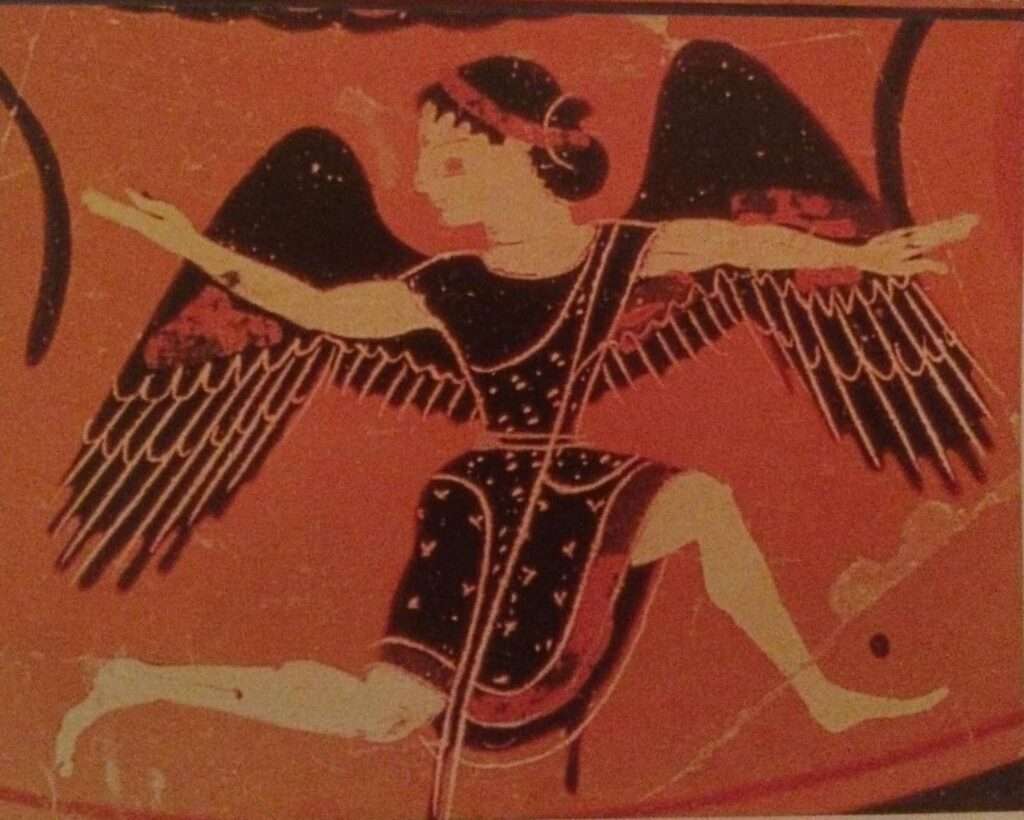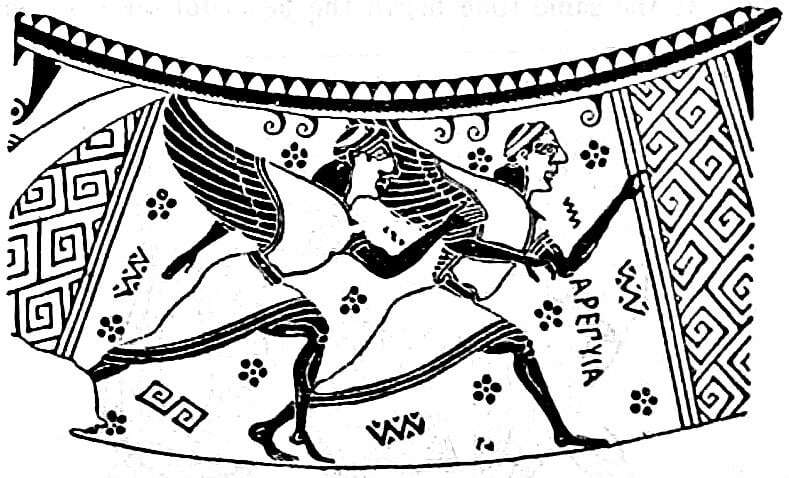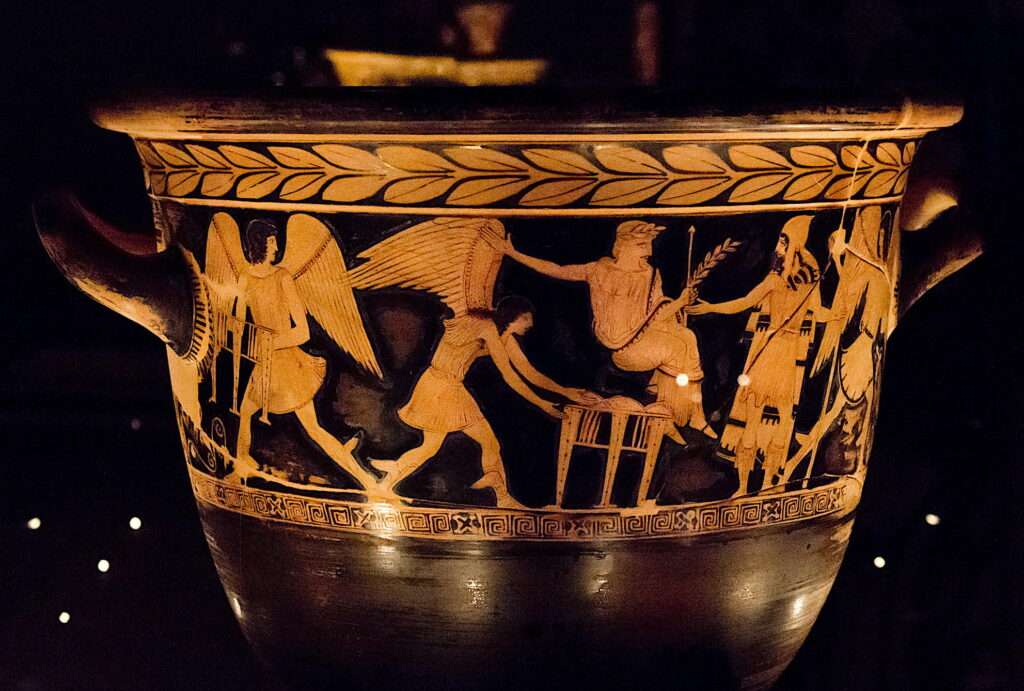Greek mythology, a cornerstone of ancient Greek culture, continues to captivate and influence modern society with its rich tapestry of gods, heroes, and mythical creatures. Among these fascinating entities are the Harpies, enigmatic figures that blend the terrifying and the alluring. Harpies, often depicted as winged beings with a woman’s face and a bird’s body, have played diverse roles in Greek myths, ranging from agents of punishment to symbols of the uncontrollable forces of nature. Their portrayal has varied across stories, yet they consistently remain figures of intrigue and mystery. This article aims to delve into the multifaceted nature of Harpies, tracing their origins, examining their representations in various narratives, and exploring their enduring impact on culture and storytelling. Our journey through myth and time will reveal how these mythical creatures continue to hold a mirror to human fears, desires, and the perennial struggle to understand the unknown.
| Origin | Greek Mythology |
| Classification | Mythical Creature |
| Appearance | Half-woman, half-bird with wings and claws |
| Behavior | Known for stealing food and tormenting humans |
| Habitat | Often associated with remote and rocky cliffs |
| Notable Harpies | Aello, Celaeno, Ocypete (Daughters of Thaumas and Electra) |
| Associated with | Symbols of storm winds, Punishment, Supernatural creatures in Greek mythology |
1. Historical Origins and Mythological Background
Historical Origins
The early epochs of Greek mythology saw the Harpies evolve from obscure mythological figures to prominent characters in various ancient Greek tales. Their history intertwines with the larger tapestry of Greek mythos, often depicting them as personifications of the destructive aspects of wind and storm.

Harpies in Ancient Texts
In Hesiod’s “Theogony” and Homer’s works, the earliest references to Harpies depict them as awe-inspiring and fearsome creatures. Hesiod specifically presents the Harpies as daughters of Thaumas and Electra, symbolizing their elemental nature. Homer’s “Iliad” and “Odyssey” also provide glimpses into the Harpies’ narrative, portraying them as swift and formidable beings.
The Harpies’ Connection with Other Mythological Entities
The Harpies’ mythology is deeply connected with other Greek mythological creatures and gods. They often appear in stories involving gods and heroes, serving as agents of divine will or obstacles to be overcome. Their interactions with figures like Zeus, the king of gods, and demigods like Achilles, highlight their integral role in the ancient Greek mythical universe. Through these connections, Harpies are not only standalone figures but also key players in the larger realm of Greek mythology.

2. Description and Symbolism of Harpies
Physical Description of Harpies
Harpies, as depicted in Greek mythology, present a unique fusion of avian and human characteristics. They are typically portrayed with the body of a bird, complete with powerful wings and sharp talons, while their heads resemble that of a woman, often exuding a haunting beauty. This amalgamation of features contributes to their depiction as both fearsome and alluring, a duality that is central to their mythological identity.
Symbolic Interpretations of Harpies
In Greek myths, Harpies frequently symbolize divine retribution and punishment. They swoop down from the skies to execute the gods’ will, often carrying away evildoers or snatching precious possessions. Besides their role as punishers, they also act as carriers of souls to the underworld, bridging the living and the dead realms. This dual role highlights the Harpies’ complex nature in Greek mythology, embodying both the punitive and the protective aspects of the divine.

Harpies in Comparative Mythology
The concept of Harpies is not unique to Greek mythology. Similar creatures can be found in various cultural mythologies around the world. For instance, the Hindu mythology features the Garuda, a bird-like creature with human features, often associated with power and speed. In Egyptian mythology, there are beings like the Ba, represented as a human-headed bird, symbolizing the soul’s mobility after death. These comparisons not only showcase the Harpies’ broad influence but also offer insights into how different cultures perceive and integrate human and animal characteristics in their mythical beings.
3. Harpies in Epic Tales and Stories
Harpies in Greek Epics: “Jason and the Argonauts”
One of the most notable appearances of Harpies is in the epic tale of “Jason and the Argonauts.” In this story, the Harpies are infamous for tormenting the seer Phineus by stealing or defiling his food, leaving him in a constant state of hunger. Their role in this epic is pivotal, as it sets the stage for the Argonauts to intervene, showcasing their heroism and cunning. This intervention not only alleviates Phineus’s suffering but also earns the Argonauts crucial guidance for their journey.

Analyzing the Role and Actions of Harpies
In the context of “Jason and the Argonauts,” Harpies serve as both antagonists and catalysts. Their actions, while seemingly cruel, are instrumental in advancing the plot and character development. This dual role highlights the complexity of Harpies in Greek mythology, where they are not merely malevolent creatures but also agents of change and challenge. Their depiction in this epic reflects the multifaceted nature of divine interventions in human affairs, a common theme in Greek mythology.
Reflection of Ancient Greek Values and Beliefs
The story of Harpies in “Jason and the Argonauts” mirrors several key aspects of ancient Greek culture and beliefs. Their portrayal as formidable yet conquerable challenges reflects the Greek admiration for heroism, intelligence, and resilience. Furthermore, the Harpies’ connection to the divine illustrates the ancient Greeks’ perception of the gods as omnipresent forces that could directly influence human life. Through these narratives, Harpies become more than mythological creatures; they embody the fears, challenges, and moral lessons that were central to ancient Greek society.
4. The Harpy’s Influence on Art and Culture
Harpies in Ancient Art and Iconography
In ancient Greek art, artists frequently depicted Harpies, symbolizing various aspects of the human and divine experience. Harpies adorned pottery, often shown in pursuit or abducting, highlighting their role as agents of divine will. Sculptures and temple friezes also featured Harpies, showcasing their significance in religious and cultural contexts. These depictions not only served as artistic expressions but also as visual narratives, conveying stories and beliefs to a populace steeped in mythological lore.
Modern Depictions
The Harpies have transcended the boundaries of ancient mythology to emerge in various forms of modern media. In literature, they have been reimagined in fantasy novels, often embodying themes of conflict and redemption. Films and video games have also adopted and adapted the Harpy, sometimes retaining their traditional characteristics, while at other times reinterpreting them to fit contemporary narratives. These modern portrayals often explore deeper themes such as the nature of good and evil, freedom, and the consequences of actions, making the Harpies relevant to new generations.

Cultural and Psychological Interpretations
The enduring fascination with Harpies in both ancient and modern times can be attributed to their symbolic richness. Culturally, they represent a bridge between the human and the divine, the natural and the supernatural. Psychologically, Harpies embody the human struggle with internal and external conflicts. They can be seen as manifestations of inner fears, desires, and the untamed aspects of human nature. This versatility in interpretation ensures that Harpies continue to be a subject of interest and analysis, reflecting the evolving understanding of myth and its impact on culture and individual psyche.
5. Different Interpretations
Varying Interpretations of Harpies Across Cultures
The depiction of Harpies has varied significantly across different cultures and historical periods. In some traditions, they are seen primarily as malevolent creatures, embodiments of punishment and vengeance. In others, they take on a more nuanced role, symbolizing natural forces or acting as messengers of the gods. This diversity in interpretation highlights the adaptability of mythological figures to different cultural contexts and the universal human tendency to personify complex ideas and phenomena.
Evolution of Harpy Myths Over Time
Mythological narratives, including those of the Harpies, are not static; they evolve over time, influenced by changing social, cultural, and religious contexts. This evolution can be seen in the transition from the Harpies’ initial portrayal as fearsome agents of punishment to more sympathetic or multifaceted characters in later texts and modern adaptations. Understanding these changes is crucial for a comprehensive grasp of their role and significance in Greek mythology and beyond.
6. Conclusion
In the realm of Greek mythology, Harpies stand out as figures of intrigue and complexity, embodying the intersecting worlds of the divine and the terrestrial. Their evolution from feared agents of punishment to multifaceted characters in stories and art reflects the dynamic nature of mythmaking and its responsiveness to human imagination and societal changes. The Harpies’ enduring legacy in modern culture, evident in literature, film, and art, attests to their timeless allure and the ongoing fascination with the mythological. This exploration of Harpies not only provides a window into ancient Greek beliefs and values but also invites us to delve deeper into the rich and diverse tapestry of Greek mythology. It is an invitation to continue exploring and reinterpreting these ancient narratives, to uncover the layers of meaning and insight they offer into the human condition, both past and present.
